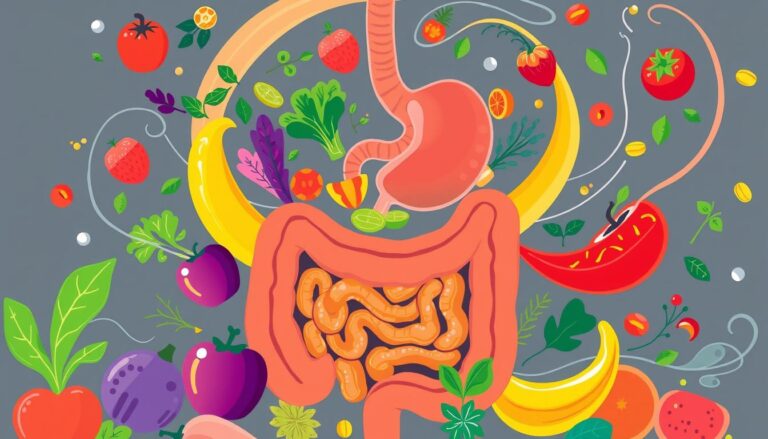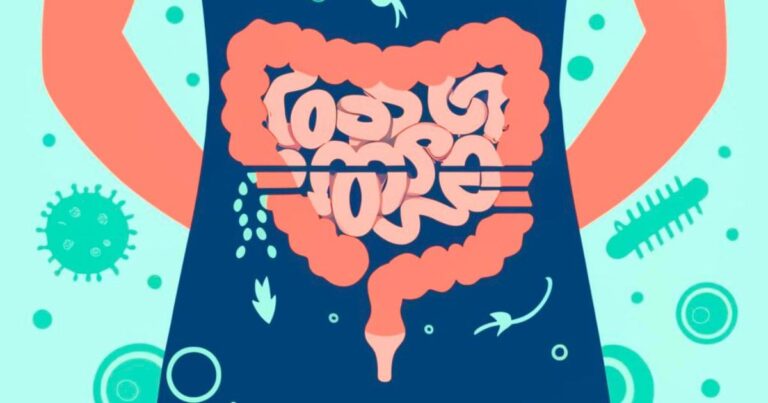Are you tired of fad diets that promise quick fixes but fail to deliver lasting results? Can a person really achieve significant weight loss and maintain overall health?
The answer lies in understanding the science behind weight loss and fat reduction.
Many individuals struggle to achieve their body composition goals due to misinformation and ineffective diet plans. A comprehensive approach focusing on evidence based strategies is necessary for sustainable weight loss.
A healthy diet and a well-planned regimen can lead to successful weight reduction. By examining the latest research and debunking common myths, individuals can make informed decisions about their health and achieve a more balanced lifestyle.
Key Takeaways
- Evidence-based methods for effective weight loss
- Understanding the difference between weight loss and fat loss
- Practical tips for creating lasting changes to diet and lifestyle
- Strategies for preserving muscle mass during weight loss
- Improving overall health while shedding unwanted pounds
The Science Behind Effective Weight Loss
The process of losing weight is often misunderstood, and it’s essential to understand the science behind it. Many health organizations use body mass index BMI to classify weight and predict the risk of metabolic disease.
However BMI has its limitations since it is calculated using only height and weight and doesn’t take body composition or visceral fat into account.
Understanding the Weight Loss Process
Weight loss occurs when the body burns more calories than it consumes. This can be achieved through a combination of diet, exercise, and other lifestyle changes. Crash diets and extreme calorie restriction often lead to rapid initial weight loss, but this is primarily due to water and muscle loss, not fat loss.
A more sustainable approach is to make gradual changes that become habitual, such as eating a balanced diet and engaging in regular physical activity.
Why Quick Fixes Don’t Work Long-Term
Quick-fix diets are often unsustainable and lead to weight regain once normal eating patterns resume. The cycle of losing and regaining weight, known as yo-yo dieting, can be detrimental to overall health.
Research has shown that people who lose weight slowly at a rate of 1-2 pounds per week, are more likely to maintain their weight loss long-term.
Sustainable weight loss is not about quick fixes but about making consistent changes that become a part of your lifestyle.
it is vital to focus on making long-term changes rather than seeking short-term solutions.
How to Lose Weight Fast 10 Scientific Ways to Shed Fat
Achieving weight loss at a healthy rate is vital for long term success. When trying to lose weight it’s essential to focus on methods that not only promote weight loss but also ensure that the weight stays off.
The Importance of Evidence Based Approaches
Relying on evidence-based approaches is crucial when trying to lose weight. This is because such approaches are backed by scientific research ensuring that the methods used are effective and safe.
Evidence based weight loss methods help in avoiding fad diets and quick fixes that are not sustainable in the long term.

Setting Realistic Weight Loss Goals
Setting realistic weight loss goals is a critical step in any weight loss journey. For safe and healthy weight loss, a rate of 0.5-2 pounds per week is considered realistic and sustainable. When setting weight loss goals, consider factors such as your starting point, body composition, and individual factors.
- Focus on losing 0.5-2 pounds per week for a sustainable weight loss.
- Set specific, measurable, achievable relevant, and time-bound SMART goals.
- Track progress using multiple metrics, including measurements and energy levels.
- Establish both short-term and long-term goals to maintain motivation.
By setting realistic goals and focusing on evidence-based approaches, you can achieve a healthy weight loss that is more likely to be maintained over time.
1. Optimize Your Protein Intake
Boosting your protein consumption is a simple yet effective way to accelerate fat loss and achieve your weight loss goals. Protein is a vital nutrient that plays a crucial role in weight management.
How Protein Helps with Fat Loss
Protein helps with fat loss by increasing satiety, preserving lean muscle mass, and boosting metabolism. A higher protein intake can lead to a reduction in hunger making it easier to stick to a calorie-restricted diet. Moreover protein requires more energy to digest than carbohydrates or fat which can increase your resting metabolic rate.
Consuming adequate protein is essential for maintaining muscle mass during weight loss. When you’re on a calorie deficit, your body may start to break down muscle tissue for energy. Adequate protein intake helps to prevent this muscle loss, ensuring that you lose fat instead of muscle.
Best Protein Sources for Weight Management
Including a variety of protein sources in your diet can help you achieve your weight loss goals. Some of the best protein sources for weight management include lean meats, fish, eggs, dairy, and plant-based options.
| Protein Source | Benefits |
|---|---|
| Lean Meats Chicken Breast, Turkey | High-quality protein, low in calories |
| Fatty Fish Salmon, Mackerel | Rich in omega-3 fatty acids, supports fat loss |
| Eggs | High-quality protein, rich in essential nutrients |
| Greek Yogurt, Cottage Cheese | Slow-digesting protein, helps with satiety |
| Legumes Lentils, Chickpeas | High in protein and fiber, supports satiety |
2. Reduce Refined Carbohydrates
Reducing refined carbohydrates is a crucial step in shedding fat and achieving a healthier diet. Refined carbohydrates, such as those found in white bread and sugary snacks, can have a detrimental impact on weight loss efforts.
The Impact of Carbs on Weight Gain
Consuming high amounts of refined carbohydrates can lead to weight gain due to the rapid spikes in blood sugar levels.
When we eat refined carbs, our bodies quickly absorb them causing an insulin surge that promotes fat storage. Research has shown that diets high in refined grains are associated with an increased risk of excess abdominal fat.
For instance, a study from the Framingham Heart Study found that individuals who consumed the most whole grains were 17% less likely to have excess abdominal fat compared to those who ate diets high in refined grains.
Choosing Complex Carbs Over Simple Ones
Complex carbohydrates, on the other hand, provide numerous benefits for weight management. Foods rich in complex carbs, such as whole grains, legumes, and vegetables, contain fiber that slows down digestion and prevents rapid blood sugar spikes. Some key benefits of complex carbs include:
- Promoting satiety and reducing overall calorie intake
- Providing sustained energy while supporting gut health
- Providing essential nutrients with minimal calories
When choosing carbohydrates, it is essential to look for foods with at least 3 grams of fiber per serving.
Making simple swaps, such as choosing whole grain bread instead of white bread, can significantly improve carbohydrate quality. By making these changes we can improve our metabolic health and reduce the risk of weight gain.

3. Incorporate Strength Training

Strength training is a crucial component of a weight loss program, as it helps build muscle and boost metabolism. Before starting any new exercise regimen, especially one that involves lifting weights, it’s advisable to consult with a healthcare professional and seek guidance from a certified personal trainer.
Building Muscle to Burn More Fat
Engaging in strength training helps build muscle mass, which in turn increases your resting metabolic rate, allowing you to burn more calories at rest. This is essential for sustained weight loss.
Effective Strength Training Routines for Fat Loss
To maximize fat loss, incorporate the following strength training techniques into your workout routine:
- Compound exercises like squats, deadlifts, bench presses, and rows that engage multiple muscle groups.
- Circuit training that alternates between different strength exercises with minimal rest.
- Progressive overload to continue muscle development and metabolic adaptation.
- Full-body workouts 2-3 times per week for optimal fat loss.
- Incorporating supersets and drop sets to increase workout intensity.
- Using moderate weights with higher repetitions (10-15 reps) for optimal fat loss.
- Starting with bodyweight exercises like push-ups, squats, and lunges for beginners.
By incorporating these strength training strategies, you can effectively enhance your weight loss journey.
4. Add High Intensity Interval Training HIIT

HIIT is a time-efficient and effective method for burning fat and enhancing cardiovascular health. This type of training involves short bursts of high intensity exercise followed by brief periods of rest or low intensity exercise.
Why HIIT Burns More Fat Than Steady Cardio
Research has shown that HIIT is more effective for fat loss compared to steady-state cardio. For instance, sprinting for 30 seconds, resting for 4-6 minutes, and repeating this process at least four times results in greater fat loss than jogging or walking at a steady pace for an hour.
This is because HIIT boosts your metabolism and increases the production of human growth hormone, which helps with fat burning.
Sample HIIT Workouts You Can Do Anywhere
Here are some effective HIIT workouts that can be done anywhere, using your own body weight:
- Tabata Protocol: 20 seconds of maximum effort followed by 10 seconds of rest, repeated for 8 rounds.
- The 30-30 Method: 30 seconds of high-intensity work followed by 30 seconds of active recovery, repeated for 10-20 minutes.
- Sprint Intervals: 30-second sprints followed by 90 seconds of walking or light jogging, repeated 6-10 times.
- Bodyweight HIIT Circuit: Perform 45 seconds of each exercise with 15 seconds rest between moves, completing 3-5 rounds.
These HIIT workouts are designed to help you lose weight efficiently and improve your overall fitness.
5. Prioritize Quality Sleep
Quality sleep is essential for weight loss, as it regulates our hunger hormones and supports our overall health. Research has shown that a lack of sleep can lead to increased hunger and weight gain, making it harder to achieve weight loss goals.
The Connection Between Sleep and Weight Management
Catching enough ZZZs is almost as important as exercise or nutrition if you’re looking to lose weight.
Studies link a lack of sleep to feeling hungrier and gaining weight. When you skimp on shut eye you’re more likely to eat bigger portions crave high carb foods, and choose fatty snacks. Try to aim for 7 to 8 hours per night.
Tips for Improving Sleep Quality
Improving sleep quality can be achieved through a few simple steps. Establishing a consistent sleep schedule is crucial, as it regulates your body’s internal clock. Create a relaxing bedtime routine, such as reading or taking a warm bath, to signal to your body that it’s time to wind down.
- Establish a consistent sleep schedule
- Create a relaxing bedtime routine
- Optimize your sleep environment
- Limit exposure to blue light before bedtime
- Avoid caffeine and alcohol close to bedtime
- Consider natural sleep aids like magnesium or herbal teas
Here is a table summarizing some key aspects of improving sleep quality:
| Aspect | Improvement | Benefits |
|---|---|---|
| Consistent sleep schedule | Go to bed and wake up at the same time daily | Regulates body’s internal clock |
| Bedtime routine | Read, stretch, or take a warm bath | Signals body to wind down |
| Sleep environment | Keep bedroom cool, dark, and quiet | Improves sleep quality |
6. Practice Mindful Eating
Practicing mindful eating is a powerful approach to achieving weight loss by changing the way we interact with food. This method focuses on developing awareness of the eating process, helping individuals to better understand their hunger and fullness cues, and to enjoy their meals more thoroughly.
Breaking the Cycle of Emotional Eating
Emotional eating is a common obstacle to weight loss, where individuals consume calories in response to emotional states rather than hunger.
To break this cycle, it’s essential to become more aware of the emotional triggers that lead to eating. By recognizing these triggers, individuals can develop alternative coping strategies, such as meditation or physical activity, to manage their emotions without turning to food.
Techniques to Slow Down and Enjoy Your Food
Several techniques can help individuals slow down and enjoy their food leading to a more satisfying eating experience and aiding in weight management.
These include putting utensils down between bites chewing thoroughly eliminating distractions during meals using smaller plates, and practicing the 5-5-5 technique.
Additionally, trying to eat with the opposite hand or using chopsticks can slow down the eating process, making the experience more mindful.

7. Increase Fiber Consumption
Incorporating more fiber into your diet is a simple yet effective way to support weight loss efforts. A diet rich in fiber can lead to reduced calorie intake and improved overall health.
Fiber’s Role in Fullness and Weight Loss
Fiber promotes fullness by slowing down digestion, allowing you to feel fuller for longer. This can lead to a reduction in overall calorie intake, supporting weight loss. Soluble fiber found in foods like oats, barley, fruits, and vegetables, forms a gel-like substance in the stomach, further enhancing the feeling of fullness.
Top Fiber-Rich Foods
Including a variety of fiber-rich foods in your diet can be both delicious and nutritious. Some of the top fiber-rich foods include:
- Legumes like lentils and chickpeas, which provide up to 16 grams of fiber per cup.
- Berries, such as raspberries, offering 8 grams of fiber per cup.
- Cruciferous vegetables like broccoli and Brussels sprouts, rich in fiber and essential nutrients.
- Whole grains including oats, barley, and quinoa, supporting digestive health.
Other high-fiber foods are chia seeds, flaxseeds, avocados, and fruits with edible skins like pears and apples. Incorporating these into your meals can significantly boost your fiber intake.
| Food | Fiber Content |
|---|---|
| Lentils 1 cup | 15.6 grams |
| Raspberries 1 cup | 8 grams |
| Broccoli 1 cup | 5.1 grams |
A high-fiber diet can help reduce the risk of chronic diseases, including heart disease and diabetes, while supporting weight loss efforts.
8. Stay Properly Hydrated
Hydration is key to boosting metabolism and controlling appetite, making it easier to lose weight. Drinking enough water is essential for overall health and plays a crucial role in the weight loss process.
Water’s Role in Metabolism and Appetite Control
Water helps in regulating body temperature, transporting nutrients, and removing waste products. Even mild dehydration can slow down metabolism, making it harder to lose weight.
Moreover, sometimes thirst can be mistaken for hunger, leading to unnecessary calorie intake. Drinking water before meals can help control appetite and reduce calorie consumption.
Replacing Sugary Drinks with Healthier Options
To lose weight it’s beneficial to replace sugary drinks with low calorie alternatives. Sugary beverages like soda, punch, and sweet tea are high in calories and sugar contributing to weight gain.
Consider switching to water unsweetened tea or coffee. You can also try sparkling water with a splash of lemon or lime for a healthier alternative.
| Beverage | Calories per 12 oz serving | Sugar Content |
|---|---|---|
| Soda | 150 | 39g |
| Unsweetened Tea | 0 | 0g |
| Water | 0 | 0g |

9. Consider Intermittent Fasting

As a potential tool for weight management, intermittent fasting has gained significant attention. This approach involves alternating periods of eating and fasting to promote weight loss and improve metabolic health.
Different Fasting Protocols and Their Benefits
There are several methods of intermittent fasting, each with its benefits. The 16/8 method involves fasting for 16 hours and eating within an 8-hour window, while the 5:2 diet restricts calorie intake to 500-600 calories on two non-conservative days of the week.
Alternate day fasting involves alternating between days of normal eating and days of calorie restriction or fasting.
Who Should and Shouldn’t Try Intermittent Fasting
Intermittent fasting may be suitable for healthy adults looking to lose weight or improve metabolic health.
However certain individuals should avoid or approach with caution including those with a history of eating disorders pregnant or breastfeeding women, and people with medical conditions like diabetes or low blood pressure. It’s essential to consult with a healthcare provider before starting any fasting regimen.
10. Manage Stress Levels
Managing stress is crucial for weight loss. Chronic stress can lead to an increase in the production of stress hormones like cortisol, which promotes fat storage around the body, particularly in the abdominal area.
How Stress Hormones Promote Fat Storage
When the body experiences stress it releases cortisol, a hormone that encourages the storage of fat, especially around the visceral area. High cortisol levels can lead to increased fat retention making it harder to lose weight. Regularly practicing stress-reducing activities can help mitigate this effect.
Effective Stress Reduction Techniques
Several techniques can help reduce stress levels including:
- Mindfulness meditation, which has been shown to reduce cortisol levels by up to 20% when practiced regularly.
- Regular physical activity, such as walking or swimming, which naturally lowers stress hormones.
- Deep breathing exercises, which can counteract the stress response in as little as 5-10 minutes.
- Progressive muscle relaxation, which reduces physical manifestations of stress.
Engaging in these activities can help manage stress levels, promoting a healthier body and aiding in weight loss efforts.
Conclusion Creating a Sustainable Weight Loss Plan
To achieve lasting weight loss it’s essential to develop a personalized plan that incorporates multiple effective strategies.
Aim for a moderate calorie deficit that supports losing 1-2 pounds per week, as research shows this rate is most sustainable and minimizes the risk of metabolic adaptations that hinder weight loss.
Combining multiple approaches such as optimizing protein intake, reducing refined carbohydrates, and incorporating strength training and high-intensity interval training HIIT will yield better results than relying on a single method.
Focus on building healthy habits that you can maintain for life, rather than following restrictive diets with clear start and end dates. Monitor your progress using multiple metrics including body measurements fitness improvements energy levels, and health markers.
It is also crucial to expect and plan for plateaus by having strategies ready to overcome them, such as adjusting calorie intake or changing workout routines.
Building a support system of friends, family, or professionals can provide accountability, encouragement, and guidance throughout your weight loss journey.
Regularly reassess your plan every 4-6 weeks to make necessary adjustments based on your progress and changing needs. Celebrate non-scale victories and focus on the positive health changes you’re experiencing to maintain motivation for the long term.





